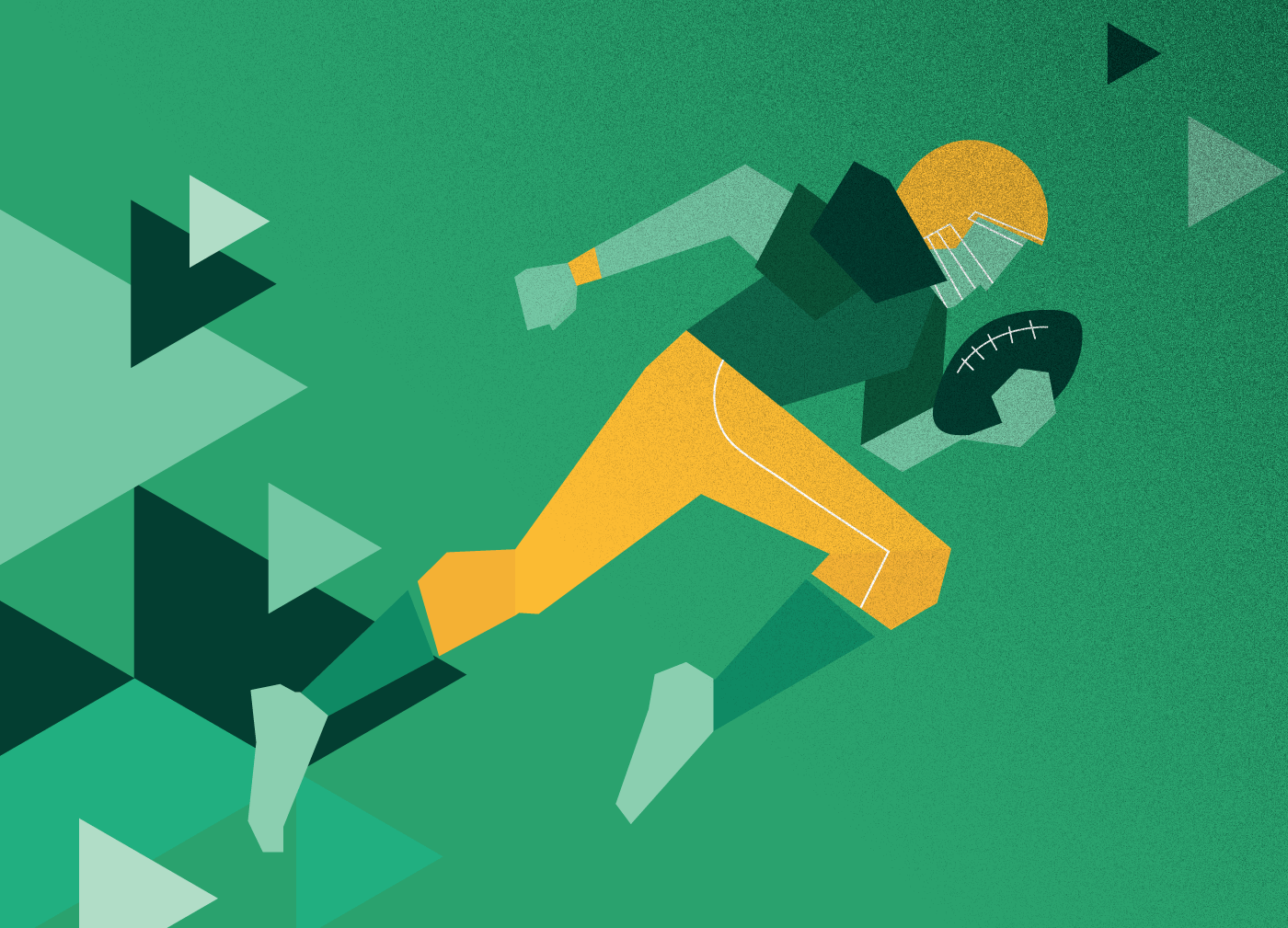
(American) football’s extreme physicality and contact nature are clear to anyone – whether you’re a spectator, stuck on the sidelines, or in the thick of the gridiron action – so injuries are guaranteed to occur at some point. But how dangerous is football to a player’s eyes, and what can be done to reduce the risk of eye injuries?
To answer these questions, a research team from the University of Toronto, Toronto, Canada, have huddled up and formed a game plan – analyzing the NFL weekly injury reports for five seasons (2015–2020) to find out how the use of visors affects the rate and severity of eye injuries. Their research revealed that eye injuries are more common in players who don’t wear visors – yet only 31.6 percent of players in those seasons actually wore visors (1).
The results support the American Academy of Ophthalmology (AAO) recommendations for football, which endorse using a polycarbonate eye shield – also known as a visor – to reduce risk of eye injury. Study lead author Arjan Dhoot says that, among NFL players, “eye pokes and gouges were the most common type of eye injury; other injuries include orbital fractures, corneal abrasions and eyelid lacerations.” Although eye injuries aren’t among the most common types of football injuries reported, it is clear that any of the injuries in this study could potentially threaten players’ careers and devastate their day-to-day lives.
The major reason for players’ reluctance to wear a visor is concern that it may reduce vision and impact performance – although previous research has shown that visors do not significantly affect reaction time or target detection. On the bright side, the study data indicate that visor use is increasing year on year, suggesting that teams and players may be paying more attention to the AAO recommendations.
How did this research topic come to fruition? Dhoot explains, “During the 2019–2020 NFL season, a star quarterback was kicked in the eye and still managed to throw a touchdown pass. This got us thinking – how prevalent are eye injuries in football? We found that this question had been answered for many other injuries, including knee and arm injuries, but no one had investigated [eye injuries] in football. A recent study had investigated them in the NBA (2), so we wanted to investigate the situation for the NFL.”
Faceoff Specialists
Leading the way in visor use is the National Hockey League (NHL), which has recently made visors mandatory for all players. A 2014 study found that the rate of eye injuries in the NHL was 2.48 per 10,000 exposures, whereas NFL rates are 1.05 per 10,000 exposures (3). The higher rate of injury in ice hockey is likely due to the speed of the puck, which is often deflected very close to players’ faces (and is more likely to make contact with the eye than a much larger football), and the use of sticks that may also end up at eye level. Since the implementation of mandatory visor use, there has been a drop in eye injuries, which will hopefully inspire the NFL and other sports organizations to set similar policies.
So, given both the AAO recommendations of the AAO and the study outcomes, what are the barriers to widespread visor use in football? Dhoot says, “In recent times, we have seen hesitancy to uptake other forms of disease and illness prevention in the United States. I think, with time and long-term education, the visor can be a safe and reliable option to help prevent eye injuries in football at all levels.”
And sports visors are no longer the boring plain plastic of years past. “The NFL recently partnered with Oakley to allow NFL players to use their PRIZM technology visors,” says Dhoot. “These visors are stylish options for players that can help improve their performance.” The options include prescription lenses, UV protection, color recognition, and glare reduction – so no more using the Friday night lights as an excuse for missing that touchdown catch.
Although this study focused on NFL players, it is clear that similar uptake of visors can reduce eye injuries in players at all levels of the sport – and the research team state that this should be a focus of further research. The risk is even higher at non-professional levels due to the absence of the healthcare and resources NFL players have, which may mean that the same injury can have much more devastating consequences.
Dhoot concludes, “Many families are concerned about safety in football, so further studies investigating and promoting the use of visors may help reduce anxiety associated with football-related injuries. As well, future studies should investigate the association between visor usage and other injuries, including concussions. Finally, a survey should be conducted to gain better insight into NFL players’ thoughts and attitudes about mandatory visor use and to explore reasons for visor use and non-use, giving insight into the positional and ethnicity differences in visor use reported in our study.” Overall, it seems clear that visors would benefit football at all levels – but will football organizations be willing to make visors mandatory for the health of their players?
References
- A Dhoot et al., Ophthalmology, 128, 1365 (2021). PMID: 33545169.
- JA Go et al., Ophthalmology, 127, 696 (2020). PMID: 32087976.
- JA Micieli et al., Can J Ophthalmol, 49, 243, (2014). PMID: 24862769.
